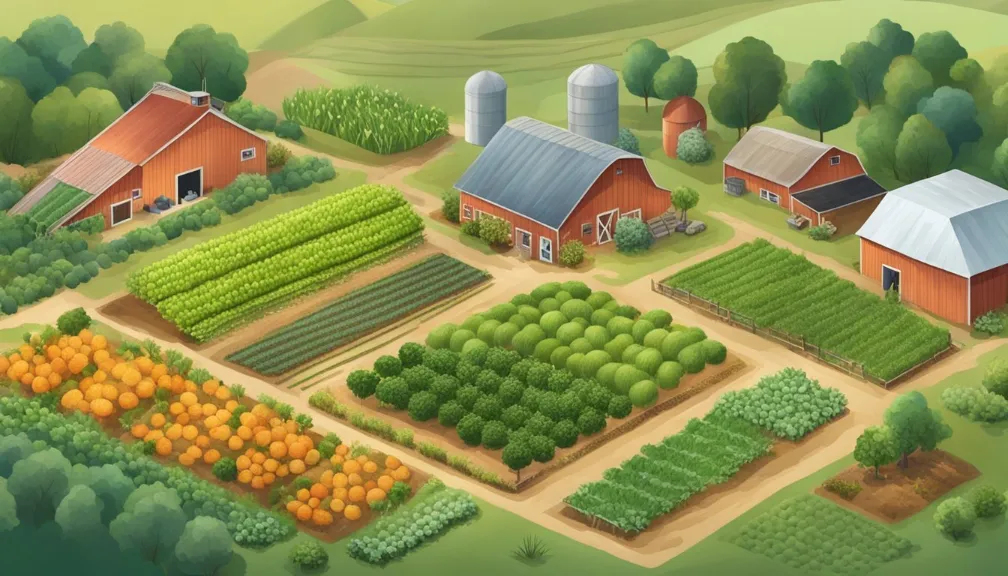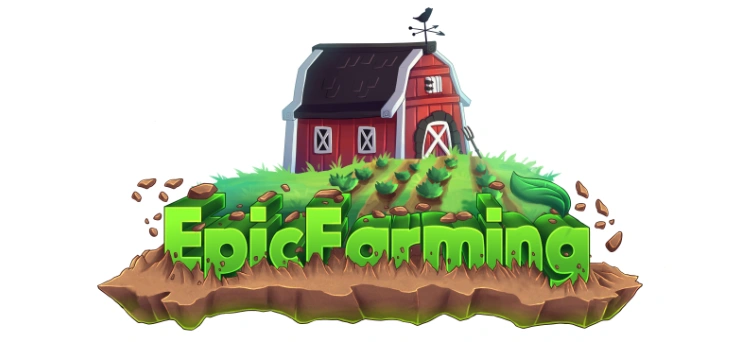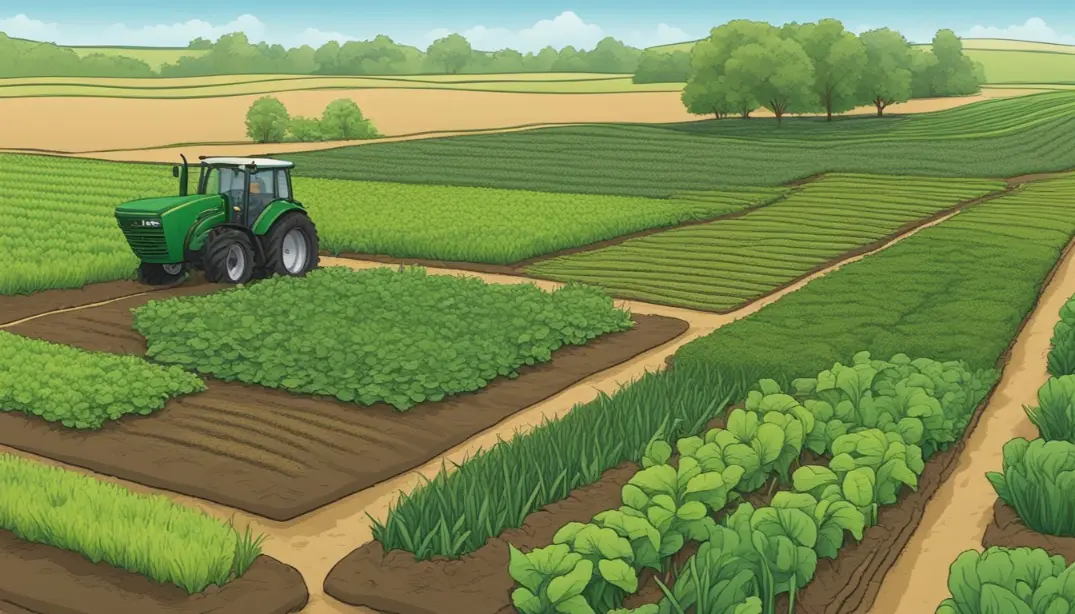Aquaponic Farming is a method of growing plants and fish together in a symbiotic system.
It combines the principles of aquaculture and hydroponics to create closed-loop system that recycles water and nutrients, reduces waste, and produces fresh & healthy food.
It has many benefits for the environment, the economy, and the society.
We will explore the benefits and explain how it farming works, what you need to start your own system.
Aquaponic Farming Works
It works by using the natural relationship between plants and fish. Additionally, in a typical aquaponic system, there are three main components: a fish tank, a plant bed, and a water pump.
The fish tank is where the fish are raised and fed. However, the fish produce waste, containing ammonia and other harmful nutrients if they accumulate in the water.
The water pump circulates the water from the fish tank to the plant bed, where the plants are grown.
The plant bed is where the plants are grown using a soilless medium, such as gravel, clay pebbles, or perlite.
Because, the plants absorb the ammonia and other nutrients from the water, which acts as a natural fertilizer for them.
The plants also filter the water and remove any toxins or pathogens, making it clean and safe for the fish. The water then returns to the fish tank, completing the cycle.
The farmer can design the aquaponic system in different ways, depending on space, budget, and preferences. Some common types of aquaponic systems are:
Additionally, media-based systems support plant growth with a solid medium for roots and space for beneficial bacteria.
Raft-based systems, where the plants are grown on floating platforms that are suspended on the water surface.
NFT systems use narrow tubes for plants, allowing a thin water film to flow over their roots.
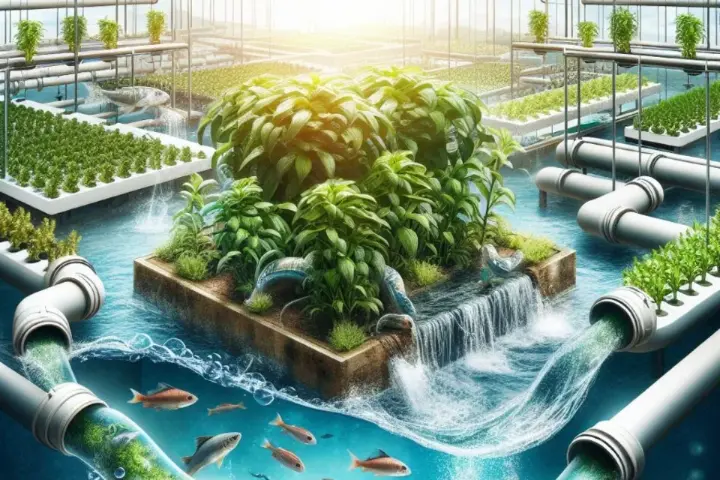
Benefits Of Aquaponic Farming
It has many benefits for the environment, the economy, and the society. Some of these benefits are:
| Benefits | Description |
|---|---|
| Water Conservation | Aquaponic farming uses up to 90% less water than conventional agriculture, as the water is recycled and reused in the system. This reduces the need for irrigation and prevents water pollution and depletion. |
| Land Conservation | It can be done in urban areas, indoors, or on rooftops, as it does not require soil or large plots of land. This reduces the pressure on arable land and deforestation, and also allows for local and organic food production. |
| Energy Conservation | It can be powered by renewable energy sources, such as solar, wind, or biogas, which reduce the greenhouse gas emissions and the dependence on fossil fuels. The only energy required for aquaponic farming is for the water pump and the lighting (if needed). |
| Food Security | It can produce a variety of food, such as vegetables, herbs, fruits, and fish, all year round, regardless of the weather or the season. This increases the food availability and diversity, and reduces the food miles and the risk of food contamination. |
| Food Quality | This type of farming produces fresh and healthy food, as the plants and fish are grown without the use of pesticides, herbicides, hormones, or antibiotics. The food is also more nutritious, as the plants and fish receive all the essential nutrients they need from the system. |
| Income Generation | It can provide a source of income for the farmers, as they can sell their surplus food to the local markets or consumers. And can also create employment opportunities for the local communities, especially for the youth and women. |
Start Your Own Aquaponic System
Embarking on your own aquaponic system can be a rewarding and enjoyable experience, as you can grow your own food and learn.
However, it also requires some planning, preparation, and maintenance. Here are some steps to help you start your own aquaponic system:
Choose Your Location
Find suitable location for your aquaponic system, where it can receive enough sunlight, ventilation, and protection from extreme weather conditions.
Consider the size and shape of your space, and the type of aquaponic system that fits your needs and preferences.
Choose Your Plants And Fish
Select plants and fish that you want to grow in your aquaponic system, based on climate, taste and your market.
Balance plant and fish needs: varying water temperature, pH, and nutrient preferences.
Choose Your Equipment And Materials
Get aquaponic essentials: tank, bed, pump, pipes, filters, media, seeds, fish, food, and test kits.
You can either buy them from a reputable supplier, or make them yourself using recycled or DIY materials.
Set Up Your System
Assemble and install your aquaponic system, following the instructions and guidelines provided by the manufacturer or the designer.
Cycle your system to establish bacteria, thereby converting fish waste into nitrates for plant use.
This process can take several weeks, and you need to monitor and adjust water quality and parameters during this time.
Maintain Your System
Maintain your aquaponic system by feeding your fish, harvesting plants, pruning, and cleaning filters.
Additionally, checking your water levels, testing your water quality, and troubleshooting any problems that may arise.
You also need to keep records of your inputs and outputs, and evaluate your performance and productivity.
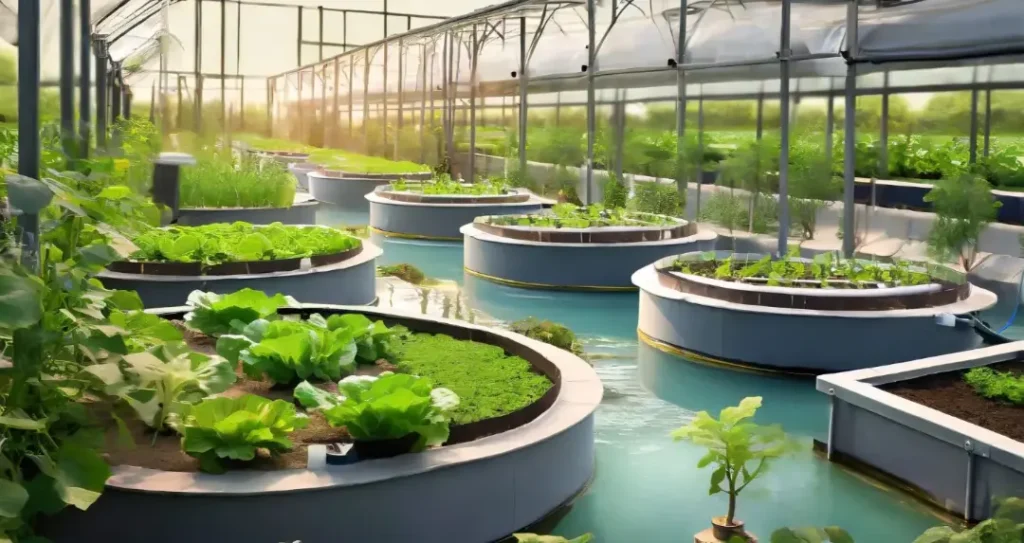
Challenges & Opportunities for Aquaponic Farming
This type of farming is promising and innovative solution for food security, but it also faces some challenges and limitations. Some of these challenges are:
| Challenges | Description |
|---|---|
| Cost | It can be expensive to set up and operate, as it requires initial investment and ongoing expenses for the equipment, materials, energy, and labor. However, the cost can vary depending on the scale, the type, and the quality of the aquaponic system, and the availability and affordability of the resources. |
| Knowledge | It can be complex and technical, as it involves the integration and management of multiple biological and physical components. Additionally, farmers need to have adequate knowledge and skills to design, build, and maintain their aquaponic system, and to deal with any issues or risks that may occur. |
| Regulation | It can be subject to different regulations and standards, depending on the location, type, and purpose of the aquaponic system. Consequently, farmers need to comply with relevant laws and policies regarding environmental, health, and safety aspects, as well as obtain necessary permits and licenses for operation. |
| Market | This type of farming can face some challenges in the market, such as the lack of awareness and acceptance of the consumers, the competition, and the price pressure from the conventional producers, and the difficulty and the cost of distribution and transportation. However, the farmers need to develop effective marketing and branding strategies to promote their products and to reach their target customers. |
Despite these challenges, this type of farming also offers many opportunities and potentials for the future. Some of these opportunities are:
| Opportunities | Description |
|---|---|
| Innovation | It can foster innovation and creativity, as it encourages the farmers to experiment and improve their aquaponic system. And to explore new technologies and methods that can enhance their efficiency and productivity. |
| Education | This type of farming can provide education and learning opportunities, as it can serve as a practical and interactive tool for teaching and demonstrating the concepts and principles of science, technology, engineering, and mathematics (STEM). As well as the values and practices of sustainability, ecology, and social responsibility. |
| Collaboration | It can facilitate collaboration and cooperation, as it can create networks and partnerships among the farmers, the researchers, the educators, the policymakers, the consumers, and the other stakeholders. Who can share their knowledge, resources, and experiences, and work together to achieve their common goals and interests. |
| Empowerment | Aquaponic farming can empower the farmers and the communities, as it can enable them to produce their own food and income, to improve their health and well-being. To reduce their environmental impact and dependence, and to increase their resilience and self-reliance. |
Read More:
What Is O Farming: Make Money Online, Get Start & Benefits
O Farming In Dubai: A New Way To Grow Food In The Desert
Palworld Farming: How To Grow And Harvest Food With Your Pals
Barbarian Farming OSRS: Guide To Mastering Ancient Art Of Farming
What Is E-Farming: Benefits, Challenges And Opportunities
Ore Farming Palworld: A Beginner’s Guide
O Farming Investing: Online Platform, Higher Returns & Low Risks
O Farming Oil: A New Trend In Online Brokerage & Benefits

Meet Our Expert Agricultural Administrator
Welcome to agrigreenhands.com, your dedicated hub for all things related to agricultural farming. Leading the way in our commitment to sustainable and innovative practices is Jawad Hussain, our esteemed administrator with a profound background in agriculture….
